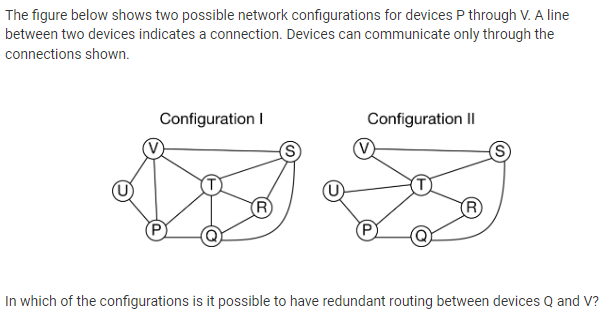13.
The following figures represent different ways of configuring a network of physically linked computers labeled P, Q, R, and S. A line between two computers indicates that the computers can communicate directly with each other. In which configuration is it NOT possible to have redundant routing between computers P and S?










